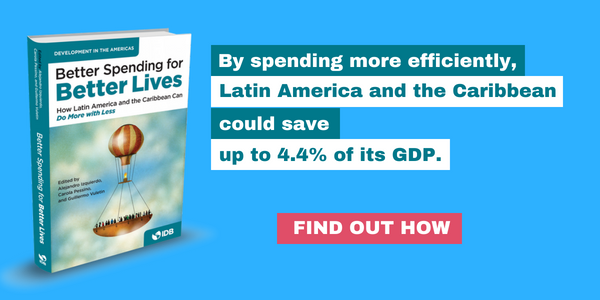Latin America and the Caribbean confronts a paradox when it comes to guaranteeing the lives of its citizens. The region is wracked by organized crime, gangs, and street violence. It suffers a homicide rate (24 per 100,000) that is four times the world’s average and spends a considerable portion of its total budget (5.4%) on citizen security.
Yet, it continues to employ approaches that criminologists increasingly agree are outdated, including random police patrols and an overwhelming emphasis on punitive over preventive strategies. All this means that it is ineffective and inefficient when it comes to confronting crime, spending far too much for far too few results against a problem that citizens consider among their greatest priorities.
Crime is highly concentrated
Studies show that around 50% of crime in Latin American cities occurs in just between 3% to 7.5% of street segments. Crime is also concentrated in a very small percentage of the population and is found overwhelmingly among people engaged in certain behaviors, including alcohol abuse, firearm’s possession, and association with gangs.
Governments thus have many proactive options when it comes to targeting criminal activity. But, as we reveal in the IDB’s new flagship report, Better Spending for Better Lives, that has not been their approach. By responding only once crimes have been committed governments not only fail to prevent crime, but also incur huge costs that might have been avoided. These are costs related to apprehending offenders, judging them, imprisoning them, and paying damages to victims, among others.
Consider hot-spot policing, the application of police resources to those small geographic units where crime overwhelmingly occurs. Studies show that hot-spot policing tends to have significant effects in preventing crime with a return of more than $5 for every dollar invested. That effectiveness has brought it into vogue for police forces from North America, Britain, Australia and New Zealand. But apart from a highly successful program in Uruguay’s cities that has cut violent robberies by 22% in targeted areas, the vast majority of countries in the region appear to have ignored the strategy altogether. Instead they have hewed to the old ways, preferring more traditional, reactive and far less successful policies.
Prevention is key
Social prevention is similarly yet to get its due. Childhood education, parenting and school retention programs can have significant spill over effects in crime prevention if well-designed and targeted. But there are also many interventions specifically created to prevent violence that can have major impacts. One example is Cognitive Behavioral Therapy (CBT), a treatment that seeks to correct flawed or anti-social ways of thinking in favor of more constructive attitudes. CBT has been found to have a greater impact than punishment in stopping young offenders from returning to crime. A version of the practice known as Multisystemic Therapy, with its strong emphasis on family- and community-based treatment, works particularly well. It has reduced recidivism in Chile by up to 6 percentage points for children and youth overall and up to 14 percentage points for those aged 16 to 18. Yet, for all the treatment’s promise, Chile is alone among Latin American countries in using it.
Other alternatives to traditional crime fighting strategies have barely gotten off the ground. Between 2002-2014, the penitentiary population of 17 countries in the region doubled to 1.2 million, a rate of growth that, if sustained, could see nearly 3.4 million people in prison by 2030 and cost governments billions more in annual expenditures. The fastest growing subset of this swelling prison population are drug offenders, mostly convicted on minor charges and non-violent. Evidence shows that prison is not a good option for most drug offenders: It only increases the possibility of reoffending. So, in the United States, where drug problems have similarly contributed to soaring prison populations, more than 2,000 drug treatment courts have sprung up, allowing tens of thousands of people to seek judicially supervised drug treatment rather than go to prison. In Latin America, such experiments are more incipient. Apart from Chile, where drug courts have been implemented as a national policy since 2011, most experiences in alternative sentencing have been very limited.
Changing priorities to defeat crime in Latin America
Changing these patterns towards more targeted, preventive and evidence-based strategies will take time. It will require leaders who can convince citizens that while effective punitive strategies are necessary, prevention is often better than repression; that there are more effective and financially efficient ways of dealing with antisocial behavior than those currently being practiced. It will require ministries throughout government to coherently link social programs with crime prevention. And it will involve more scientific approaches to data collection, so that there is better information for targeted strategies like hot-spot policing, and for evaluating interventions, to keep those that work and discard the rest.
Latin America and the Caribbean, currently losing 140,000 lives per year and 3.5% of its GDP to crime, is suffering terribly from its crime epidemic. That means it has to be smart on crime. More public investment can help; but only if it is allocated towards more efficient and effective policies will it defeat the scourge.
To read more, click here to download your copy of the new IDB flagship report.



Leave a Reply